#pokemon biology
Text
Pokemon Crossbreeds: Sprinter
Sprinter is the name for members of the Scorbunny line who had Yamper/Boltund fathers. The breed came about during thr ride of Agriculture in Galar, being cute and trusted pokemon that chase away predators while also being a pokemon Galarians can trust by their side. Now, they're mostly used as a battle breed for their speed.



Scorbunny

Sprinter Scorbunny gain some traits as yamper, such as tail shape, an eye spot, and neck fluff. They're a lot more excitable than standard scorbunny, and enjoy sprinting in open fields. Their speed combined with their fire power makes them strong, but it's also easier for them to overheat, sk they end up panting like Yamper does to cool themselves down.
Raboot

My personal favorite of this breed! Sprinter raboot gain the traits of Boltund, such as the spot on their eye and lighter fur color. They tend to have a better mood than standard Raboot, making them very popular breeds.
Cinderace
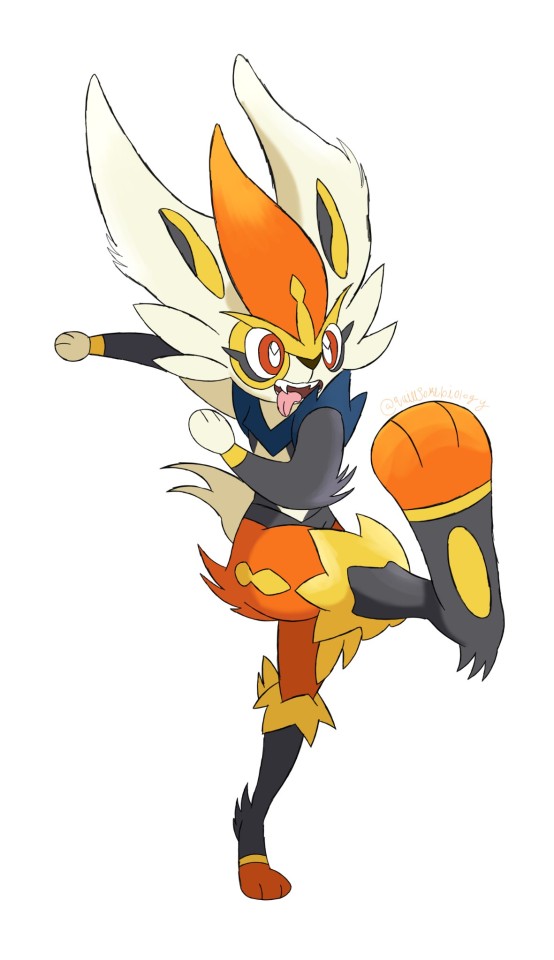
Sprinter Cinderace also have traits of Boltund, such as bigger and more rounded eyes, a black nose, and fur coloring that now resembles a track suit a bit. Instead of Electricity, they send fire energy to their legs to give them more speed, which makes them just as fast as Boltund! Though, this does give them an added effect of always panting because they're always hot. They also tend to be very clingy with their trainers, so be aware of that too!
//My designs can be used by anyone if you credit me for the original design!
#//i drew scorbunny and raboot back in NOVEMBER#//i just forgot i had these lol#scorbunny#raboot#boltund#cinderace crossbreeds#rotomblr#pokemon irl#pokeblogging#pokeblog#irl pokemon#pokemon#pokeblr#rotumblr#pkmn irl#pokemon roleplay#pokemon biology#irl pkmn#pokemon crossbreeds#crossbreed pokemon#pokemon variants
20 notes
·
View notes
Note
Please tell me that spoink don't actually die when they stop bouncing I cannot believe the Pokedex on this one how would they possibly adapt to do that
that is indeed how they keep their blood pumping. the way their anatomy is set up, they need the force of hitting the ground to pump their blood through their whole body. it's just how they evolved! they don't need much deep sleep, and when they do sleep, their metabolism slows so drastically that they're able to get by without bouncing for a few minutes. it sounds impossible to us, but pokemon can do a lot of really incredible things!
as for why they would develop that way- it's actually a pretty energy-efficient method of moving, and the spoink can act as its own external force on its springy tail. it's also really hard for a lot of predators to predict that movement! in a competitive world with a lot of unique challenges to face, finding whatever way you can to survive means that you can develop some odd skills.
187 notes
·
View notes
Photo
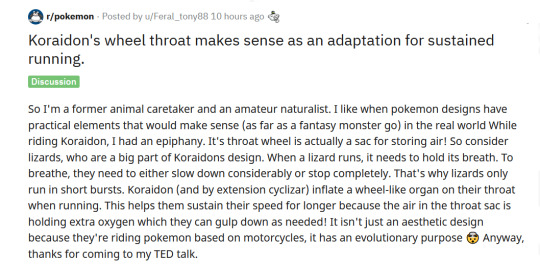

Saw this post on the Pokemon Reddit that I wanted to share to Tumblr!
Text ID: So I'm a former animal caretaker and an amateur naturalist. I like when pokemon designs have practical elements that would make sense (as far as a fantasy monster go) in the real world. While riding Koraidon, I had an epiphany. It's throat wheel is actually a sac for storing air! So consider lizards, who are a big part of Koraidons design. When a lizard runs, it needs to hold its breath. To breathe, they need to either slow down considerably or stop completely. That's why lizards only run in short bursts. Koraidon (and by extension cyclizar) inflate a wheel-like organ on their throat when running. This helps them sustain their speed for longer because the air in the throat sac is holding extra oxygen which they can gulp down as needed! It isn't just an aesthetic design because they're riding pokemon based on motorcycles, it has an evolutionary purpose 🤯 Anyway, thanks for coming to my TED talk. End ID
#pokemon biology#in-universe Pokémon science is the best#koraidon#pokemon scarlet and violet#pokemon sv#please continue the conversation in reblogs - I just wanted to present the original in it's full contexts#this is not my reddit post! I do not have a reddit!#queued for the morning
1K notes
·
View notes
Text
Guys, the reason Koraidon's runs on all fours and doesn't use it's "Wheels" is because they AREN'T wheels.
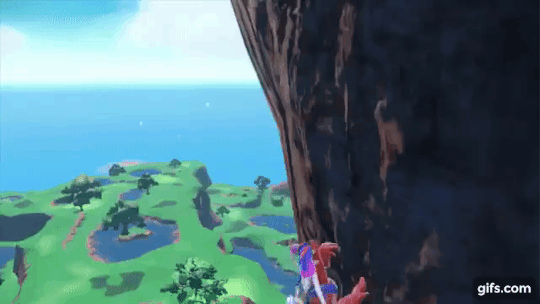
They're gripping pads.
Koraidon doesn't have Miraidon's advancements, so it needs ways to function as an ATV without being mechanical.
What looks like tires is actually a inflatable throat sack and a portion of it's tail covered in firm, gripping spines.
It uses them to gain traction on vertical spaces or areas with slippery surfaces.
#pokemon#koraidon#pokemon scavio#pokemon biology#honestly though#what reason would it have for those parts to rotate?
2K notes
·
View notes
Text
You know what Alola has a lot of? Water. And when there’s lots of water you get lots of aquatic Pokémon. Welcome back to the series where I discuss the real-life inspirations of every aquatic, non-fish Pokémon. This time I’m covering gen VII. To see previous entries in this series see gen I part 1, gen I part 2, gen II, gen III, gen IV, gen V, and gen VI. For my previous series where I covered the origins of all fish Pokémon see here. As before, starters and legendary/mythical Pokémon will be covered in a separate series. I’ll also cover ultra beasts separately, so no Nihilego this time.
Starting things off we have Marenie and Toxapex bringing us the first echinoderms since gen I. While Staryu and Starmie were generic starfish, the Marenie line are based specifically on the crown-of-thorns starfish.
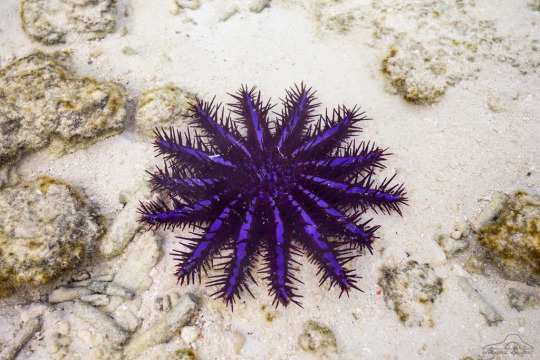
(image: a crown-of-thorns)
These are large starfish covered with venomous spines. The spines are used for defense as they (and the starfish’s other tissues) are filed with a chemicals called saponins. While there is no mechanism for injecting venom, any animal punctured by a spine will get the venom in the wound. It is hemolytic, causing destruction of red blood cells, which can lead to the injured animal suffocating or bleeding out. In addition, the spines are brittle and can break off and get stuck in a wound. In humans, the venom can cause sharp, stinging pains, persistent bleeding, and swelling and nausea for up to a week after the sting. The persistent nature of the pain and hemolysis may be the basis for the line’s signature ability “Merciless”. The other big feature of the crown-of-thorns is its diet. They feed on coral polyps by everting their stomachs onto coral and digesting them externally. This is why the line are specifically stated to prey on Corsola. Too many crown-of-thorns in one coral reef can badly damage it, hence why Toxapex is said to leave a trail of Corsola horns in its wake. Toxapex also takes influence from the hā’uke’uke or helmet urchin, a species found in Hawaii that is shaped very similar to Toxapex’s tentacles when they are all down.

(image: a hā’uke’uke)
Dewpider and Araquanid are based on diving-bell spiders. These spiders spend almost their entire lives underwater, the only species to do so. They do still need to breathe air and so used a coating of water-repelling hairs to carry a bubble of oxygen with them when they are underwater, surfacing occasionally to refresh their supply. The Dewpider line are the inverse of that: a species that can only breathe water and need to bring a bubble of water with them while they live on land. Because of this, they may also be based on sea spiders, a group of marine arthropods that look very similar to spiders. This origin is more noticeable with Araquanid, which has the skinny body and long legs of sea spiders. In both species, the bubble over the head is based on a diving helmet.
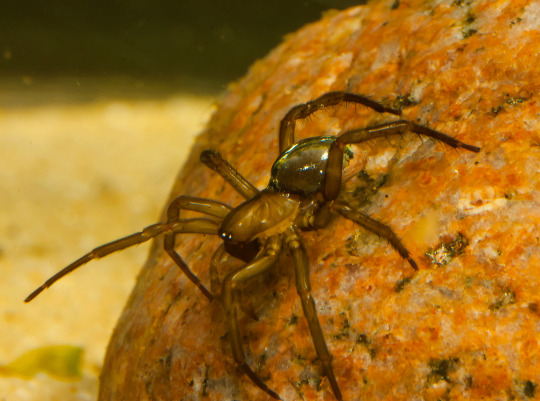
(image: a diving bell spider with its air bubble visible)
Wimpod is one of my favorite gen VII mons and its origin is complex. It is based on a variety of aquatic arthropods. Most notably it resembles an isopod while having a head similar to a trilobite.
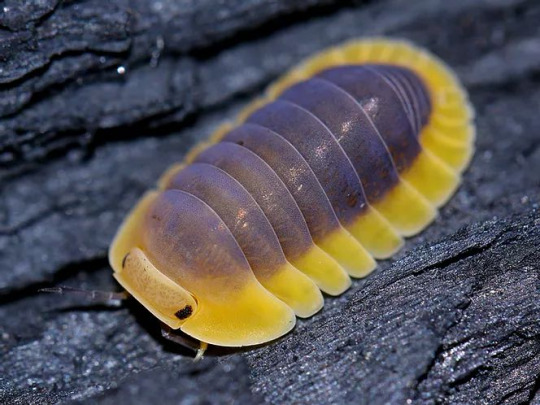
(image: a terrestrial isopod)
It also looks like a copepod, which are zooplankton that have prominent antennae. Fun fact: Plankton from Spongebob is a copepod.

(image: a copepod)
Wimpod’s behavior of fleeing at the first sign of danger is very similar to silverfish. These are insects with a similar body shape to Wimpod that are famous to coming out in the dark and fleeing once the lights come on.

(image: a silverfish)
Wimpod’s habit of eating almost anything and leading a clean path as it travels makes it effectively a living Roomba. As Golisopod, it is based on the giant isopod, a group of species that are much larger than the average isopod thanks to deep-sea gigantism. This is a phenomenon where animals living in the deep ocean become larger than their shallow-water relatives and has a number of proposed causes. The largest and most famous of the giant isopods reaches a maximum recorded length of 50 cm (19.65 in), which is still quite a bit shorter than Golisopod’s 2 m (6’7”). It is also based on samurai as its shell resembles samurai armor and some of its behavior (such as meditation) comes from samurai stories. Its ability to cleave the air in twain with its claws likely comes from classic exaggerations of a warrior’s ability. Golisopod doesn’t care much for a samurai’s code of honor though, as it will happily fight dirty and run from fights.
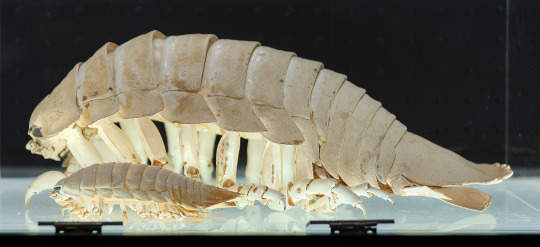
(image: preserved specimens of two giant isopod species)
Gen VII was a good one for echinoderms as coming off the hells of the starfish Marenie line we get a sea cucumber in Pyukumuku. Sea cucumbers have a pretty simple body plan, basically looking like tubes. Their most famous ability is a defense strategy some species employ where they can eject part of their guts to deter predators. In real sea cucumbers, the ejected guts will regenerate while in Pyukumuku, they can retract back into the body and even act like a hand. Sea cucumbers also have external gonads that look like strings. The fluffy tail Pyukumuku has is actually its genitals. The spikes on top might be based on sea urchins, which are relatives of sea cucumbers.
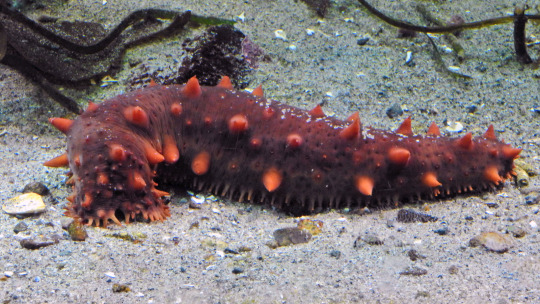
(image: a sea cucumber with similar spines to Pyukumuku)
Our final Pokemon for today is Dhelmise and it’s a weird one. An anchor and ship’s wheel bound together and possessed by the ghost of seaweed. What confuses me is that it’s a wooden anchor. It turns out wooden anchors were used at one point in early boats, but were phased out in favor of ones made of iron. Dhelmise being haunted parts of ships is reminiscent of tales of ghost ships, though on a smaller scale. The seaweed on it may be dead man’s fingers, which grows small tendrils and the name is obviously fitting for a ghost-type.
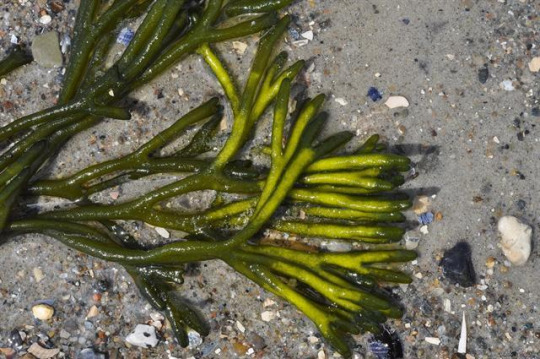
(image: dead man's fingers)
The shiny version having red seaweed could reference red tide, a type of algal bloom that can turn parts of the ocean red. Dhelmise hunts Wailord, meaning it may have been a part of a whaling ship and now the ghosts within it are carrying out their last tasks endlessly, a common trope in ghost stories. It may also reference Moby Dick’s Captain Ahab and his obsessive quest to kill the white whale.

(image: a sunken anchor from a shipwreck in Hawaii's Papahānaumokuākea National Monument)
That’s all for now. Return next time when we go to Galar.
#pokemon#pokemon biology#pokemon lore#pokemon origins#marine biology#aquatic biology#animal facts#zoology#marenie#toxapex#dewpider#araquanid#wimpod#golisopod#pyukumuku#dhelmise#starfish#crown of thorns#diving bell spider#isopods#trilobite#copepods#giant isopod#sea cucumber#echinoderm#anchor#silverfish
173 notes
·
View notes
Text
When the pokedex talks about a Fire Type Pokemon's body temperature, it actually means its maximum body temperature. Magmar aren't usually 2200 degrees, but they can get there during a battle.
118 notes
·
View notes
Text
Tinkaton are largely solitary creatures, but they will occasionally have peaceful meetings with other conspecifics wherein they trade in scraps of metal or jewels to embellish their hammers. Researchers were stumped for decades on how individuals who were known to have spent their whole lives in a single area would add stones from faraway caves to their collections, until one Ranger happened to witness and film such an exchange. The trade value that Tinkaton place on different gems and minerals remains unclear. Thus far, it seems that some individuals prefer harder, spikier pieces that will help deal more damage when they swing their hammer at foes, whereas others prefer more sparkly or colorful gems for an aesthetic effect.
-Thea
#pokemon#tinkaton#pokemon scarlet and violet#pokemon headcanons#pokemon biology#paldea#fairy type#favorite
428 notes
·
View notes
Text
Pokemon Headcanons: The Bulbasaur Line!
* Capable of photosynthesis but also like to nosh plants they’re herbivores
* Momma venusaurs lay clutches of 4-8 eggies
* They smell SOO good all the time like fresh flowers and rain :)
* Bulbs and ivys aren’t that lazy but venusaurs VERY much are they be nappin
* Very affectionate and love snuggling with each other, other Pokemon, and humans :)
* They shed their skins every 6-8 weeks and they need help pullin out those nose bits like irl breaded dragons
* When they shed their flower also dies and reblooms
* Baby bulbasaurs are EXTREMELY clumsy and will fall over
* Especially when they get excited and start running they trip on they own feet </3
* Venusaurs can get LOUD if they want/need to thems can ROAR
* Pack animals fr they travel in large herds out in the wild
* These herds include a dominant male that protects the females and their babies
* When about to lay eggs, female venusaurs get visibly swollen tummies (again like irl bearded dragons they are very bearded dragon core to me)
* They chew very slowly like cows
* Go CRAZYYYY for berries especially the very sweet ones
* No object permanence they fail ball cup game </3
* I just see them being so stupid (affectionate)
* Like you point to the treat on the ground in front of their face and they’re just like HUH?! WHUH??
* They like to swim but only in fresh water as salt water is bad for their plant
I think that’s all I got!! I wanna try to do all the mons if I can! Also yes a lot of them are sciencey BC IM A BIOLOGY NERD GOT DAMMIT and we need to talk more abt Pokemon just being fuckin animals bc they are!!! They’re just fuckign!!!!!! Creechurs!!!!!
#pokémon#pokemon#pokeblr#pokemon gen 1#bulbasaur#ivysaur#venusaur#pokemon headcanons#they just little guys#pokemon biology
25 notes
·
View notes
Text

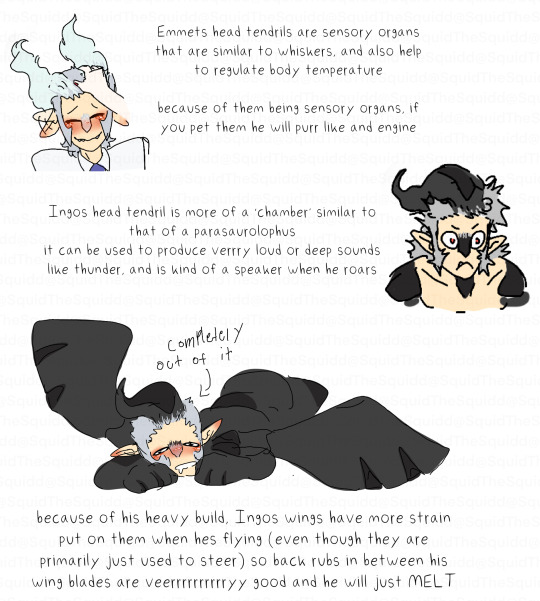

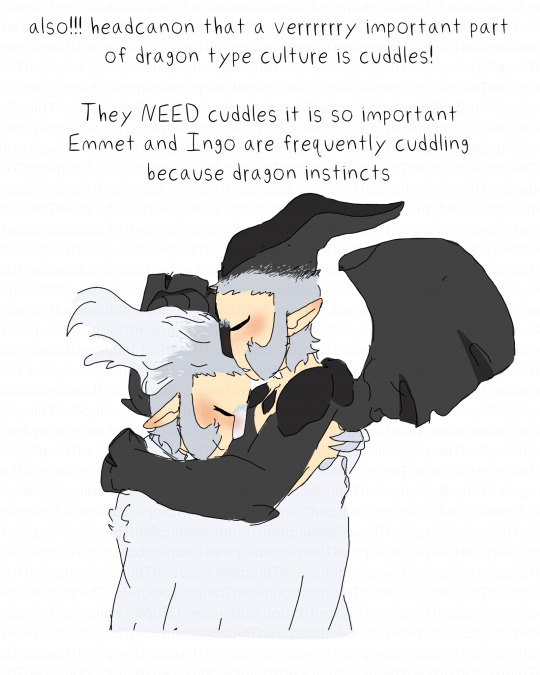
Dragon boys study!
im highkey obsessed with fantasy biology and just LOVE worldbuilding and stuff
ASK ME QUESTIONS ABOUT POKEMON BIOLOGY!!!!! AAAUUUAGGHH!!!
#submas#twin dragon au#pokemon#pokemon bw#pokemon black and white#emmet#ingo#kudari#nobori#subway boss emmet#subway boss ingo#subway master emmet#subway master ingo#reshiram#zekrom#reshiram emmet#zekrom ingo#pokemon biology#bl*nkshippers DNI!!!! this is not for you!!!! let cuddles be platonic!!!!!
70 notes
·
View notes
Note
HOW DO YOU VACCINATE A ROCK TYPE?!?!?!
quickly and carefully haha!
despite what the typing may suggest, not all rock types* are made of rock, and most of our residents are in fact covered in either a mix of scales or finely-overlapping feathers, which you can inject between
as for something like a roggenrola…yeah, well, you may have to convince the lil guys to take something orally, much like our Hoenn fossils (whose biology is a little more tricky to just inject)
*i was actually going to add an addendum about fossil rock-typing but it turned out to be a bit lengthy so imma make a separate post for it lol. in the meantime here's my boy very excited that i bought him a massive chew bone for sitting so nicely for vaccines
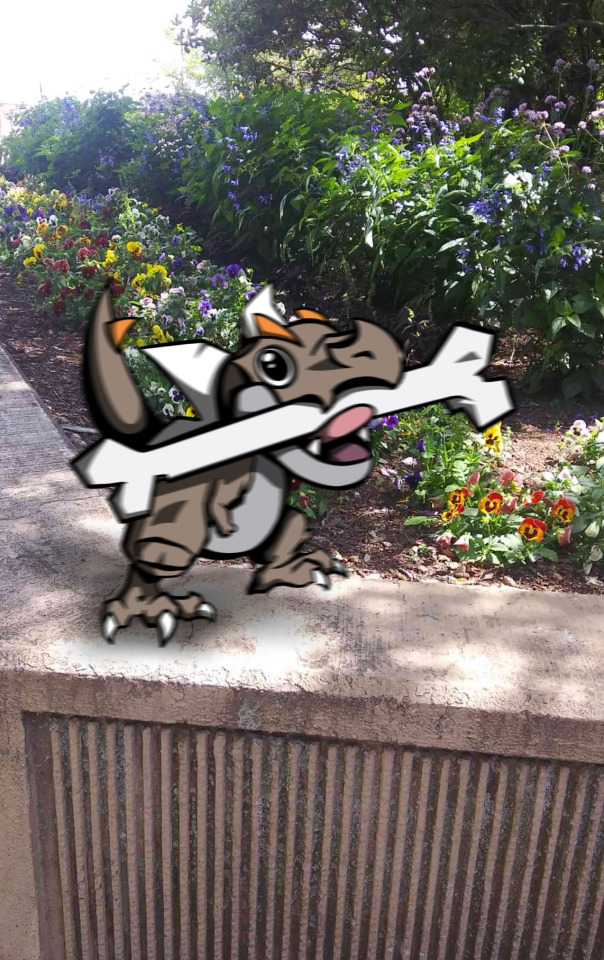
#pokemon irl#pokeblogging#rotomblr#fossil pokemon#pokemon biology#prforiginal#tyrunt#i have no excuse i've just been procrastinating answering this rip. defo a me problem dw keep sending asks if u want!!
17 notes
·
View notes
Text
Lepidoptera - the Moth and Butterfly pokemon
While I had photoshop open, I decided to rework this one too
Prints here

#pokemon#digital art#my art#art#nintendo#pokemon art#digital painting#sketch#bugs#insects#butterflies#butterfly#caterpillar#moth#moths#poster#pokemon biology#bug pokemon
235 notes
·
View notes
Text
Pokemon Crossbreeds: Bumblebee
Bumblebee is the name for members of the Combee line with a Joltik/Galvantula father. This breed is rare since Vespqieun rarely ever want to mate with mon that aren't Combee, seeing most other bug types as enemies. The breed was named after their fluffy bodies.
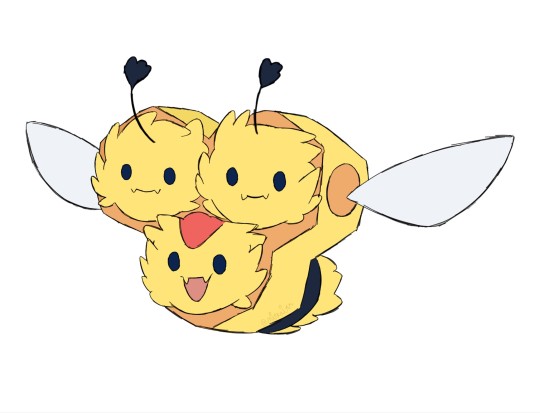
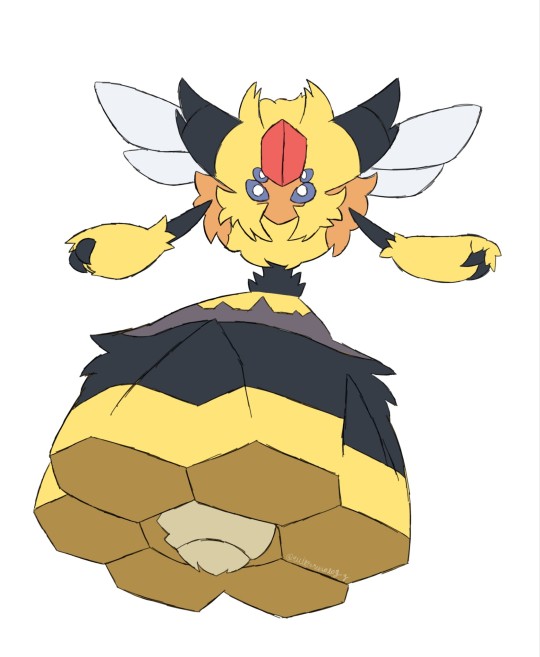
Combee

Because Vespiquen often see other bugs as enemies, crossbreed combee are often driven out of their hives. This isn't that bad for female Combee, who are better suited to be by themselves, but it's often a bigger problem for male combee who rely on others to survive. This breeds fluffy bodies help them carry more pollen, which is good if they're living on their own.
Vespiquen

Bumblebee Vespiquen have similar behaviors to standard Vespiquen, but they tend to be more gluttonous and aim for prey instead of just eating honey. Since Vespiquen have a natural instinct to lead, the ones that were driven out of hives tend to find other lone Combee and make hives with them. Hives that are run by crossbreed Vespiquen tend to have a smaller population but are more tight-knit and accepting of new members.
Anyways, Vespiquen. Like Galvantula, these Vespiquen will set traps to catch mon that come by. The hives they make can also often resemble spider webs as well.
//My designs can be used by anyone of you credit me!
#//dw im doing the other crossbreeds#//this was just in my drafts and i decided to finish it#crossbreed pokemon#pokemon crossbreeds#combee crossbreeds#vespiquen crossbreeds#galvantula#combee#vespiquen#pokemon biology#pokemon biologist#pokemon variants#bug type#bug type pokemon#bug types#flying type#flying type pokemon#flying types#rotomblr#pokemon irl#pokeblogging#pokeblog#irl pokemon#pokemon#pokeblr#rotumblr#pkmn irl#pokemon roleplay#pokeblogging roleplay#pokemedia
598 notes
·
View notes
Note
My mom gave me a large pot of dirt like a week ago and a baby Bulbasaur just crawled out of it today. Is this. Is this normal??? Do they bury their eggs?
they do! mama bulbasaur dig holes in soft soil to lay their eggs in, then cover the eggs up so they're kept warm for incubation. when the babies hatch, they slowly dig their way out while absorbing nutrients from the soil until they break out and can start photosynthesizing.
if that dirt was for gardening, a garden bulbasaur can be a great pokemon to have around. their dung makes fantastic plant food! but if you're not looking for a pokemon right now, you can take the little guy to any pokemon drop-off location to be rehomed, released, or sent to a shelter.
101 notes
·
View notes
Text
Houndour & Houndoom
Houndour (#228)
Canisinfernis fidelis
Houndour are social Pokémon that form packs with others of its kind. In this world, Houndours and their evolution are substitutes for coyotes.
Houndour average at 2 feet tall (0.6 M) and 23.8 pounds (10.8 kg). They are small lads.
Habitat: The grasslands, cities, and mountains of Turtle Island/the Americas. They are incredibly versatile in the habitats that they can live in, and have recently become increasingly common in urban areas.
Life Cycles: Houndours are born in early April to average litter sizes of 6. They are entirely dependent on their two parents for food and shelter until they’re old enough to leave the nest around August timeframe. Whether or not they actually do leave their parents is a different matter. Some do, some don’t. Their family structures are fluid in these regards, with packs forming from parental pairs and their offspring, and often with siblings or even unrelated Houndours. A Houndour is usually reproductively mature come the following mating season in January/February (so long as it has reached level 15). An individual usually reaches adult proportions around September, which is often when they achieve level 15, too.
As grown Houndours, individuals may stay with their parents to patrol territory and help in hunting, or they may move on to claim their own territory. It is rare to see Houndours outside the structure of a pack.
Behavior: Houndours form packs with others of its kind, sharing immense loyalty to each other and communicating in a refined language of barks and howls. Their teamwork is considered unparalleled, and a pack of Houndours is a highly effective force not to be reckoned with. This loyalty and intelligence lends them to being excellent companions to humans, especially those with great need for a Houndour’s intellect. In high-density urban areas, Houndours have even been known to take the subway!
They communicate with each other using a refined series of barks and howls. Barks are used for determining the location of pack members, especially during a hunt, while howls are a declaration of territorial ownership.
Diet: Houndours are carnivores with a tolerance for omnivorey when necessary, giving them dietary flexibility in urban environments. When they work together, they’re able to take down prey much larger than themselves like Deerling, but they often scavenge the meals of larger predators like Stoutland.
Conservation: Least Concern with some sub-populations being Threatened.
Relationship with Humans: Houndours and Houndooms have a mixed relationship with humans. On one hand, they are treated as invaluable companions that are both loyal and have the intellect necessary to be useful to humans. On the other hand, their intellect makes them seen as wily, conniving, tricksters by many. All things considered though, Houndours and by extension Houndooms had an overall positive/mutually-respectful relationship with the Indigenous Peoples of Turtle Island (the Americas).
In modern times, when anti-predator sentiment rise in folks, Houndours are often high on the list of creatures that rural American farmers want the right to dispose of as seen fit on their own terms. Like coyotes in the real world, Houndours are given the short end of the stick in terms of environmental protections, and they’re generally treated as nuisances and vermin. Their high intelligence not doing them favors in these regards.
Because of the prejudice toward Houndours and Houndooms and dark-types in general, many municipalities do not even consider them for viable starter Pokémon for new trainers, despite their high intelligence and deep loyalty.
Classification: The genus “Canisinfernis” is a combination of “Canis” and “Infernum” (hellfire in latin), and “fidelis” means “loyal”, which in total means “Canisinfernis fidelis” means “loyal hellhound.”
Houndoom (#229)
Canisinfernis canisinfernis
General Information: Houndoom is the evolved form of Houndour. In their guts are a series of toxins that it uses to produce poisonous fire. This gives its flame-breath a foul odor, and allows it to leave burns on foes and prey that are difficult to heal. Its howls are bone-chilling, known to induce shivers in other Pokémon and sending them scurrying back to their nests.
It has a Mega Evolution.
The species averages at 4’7 feet tall (1.4 M) and 77.2 pounds (35 kg), while Mega Houndoom is 6’03 feet tall (1.9 M) and 109.1 pounds (49.5 kg)
Habitat: The same places as Houndours, especially rough terrain areas.
Life Cycles: Houndooms form monogamous pairs that will extend multiple mating seasons. If their pack is a parental pair and their children, it will be the Houndooms who reproduce, but should the pack structure follow a different dynamic, it could be any combination of Houndours and Houndooms who reproduce. Houndooms are loyal, co-operative parents. Males will go out hunting while the females stay behind to raise the Houndour puppies.
Houndooms are known to live for about 20-25 years in captivity.
Behavior: Houndooms are great parents and pack leaders. In a pack, the Houndoom with its horns raked sharply toward the back is the leader of the pack, which is determined by fights for dominance within the pack.
Diet: Houndooms are largely carnivorous but has a mild tolerance for omnivorey.
Conservation: Least Concern, but some sub-populations may be Threatened.
Relationship with Humans: Houndooms are most common as companions of gangs and mafias, since they are most likely to look past their appearance and see them for the valuable companions that they are. This, unfortunately, only contributes to the bad rep that Houndooms receive in the general cultural conscious. Even when European settlers were first exploring the Americas, they likened Houndooms to be servants of the devil and their howls from the grim reaper directly, and that perception hasn’t really changed for a lot of people. Houndooms are also misused in dog-fighting rings, to the great detriment to their cultural perception, and to the outrage of Pokémon Activists and Houndoom Trainers everywhere.
In pop media, if the writers want to quickly convey that a trainer is an intimidating sort, giving them a Houndoom is an easy way to do this—though anyone with a Houndoom of their own will tell you that they’re loving companions who want belly-rubs and treats for being good boys as much as any other dog Pokémon.
Classification: Houndoom are in the broader canids with other dog Pokémon.
Evolution: Houndour evolves into Houndoom at level 24.
~~~~~~~~
Hey guess what, if you like my stuff, this is my website where you can find other Pokémon I've written on and more information about the game that I’m slowly making! Check it out! I write books sometimes too.
#houndour#houndoom#mega houndoom#pokemon#pokemon biology#pokemon biology irl#pokemon irl#pokemon biology irl tabletop#pokemon tabletop#pokemon irl tabletop#tabletop homebrew#homebrew#ttrpg#tabletop#gen 2#pokemon gen 2#gen 2 pokemon#dog days of summer
30 notes
·
View notes
Text
Poltchageist is NOT a convergent Pokemon. it's a haunted object, so it didn't evolve at all. Wiglett evolved to look like Diglett, this didn't evolve at all. We don't know it's exact relation to Sinistea and Polteageist but its definitely not convergent. If anything, my guess is its more like Cofagrigus and Runerigus- the same type of spirit in two different vessels. I actually quite like this- more different ways for Pokemon to be related grounded in irl (somewhat...) is always a plus in my book.
25 notes
·
View notes
Text
A while back I made a series of posts examining the real-world origins of every fish Pokémon. It’s been a while but I’ve gotten the urge to do more of that. So now I’m doing the same thing, but with every aquatic non-fish Pokémon instead. What I define as aquatic is that it has been depicted as aquatic either in Pokédex entries or in the main series games. Most of them are water-types but not all and there are even a few water types I don’t think are aquatic. I’m also going to cover the water starters and legendaries/mythicals in their own segments. I will start with generation I, which I will be splitting in half because of how many there are. This entry will cover the Psyduck through Shellder lines while part 2 will cover the Krabby through Dratini lines.
The Psyduck line seems pretty obvious. It’s right in the name, they’re ducks, right? Well I’m not entirely convinced that’s all. Psyduck has the classic yellow duckling/rubber duck coloration, but it clearly has arms instead of wings. There’s another hint of them not being ducks in their typing. Back in the development of gen I, the flying type was called the bird type. This is why the Doduo line is part flying despite being flightless. The similarly flightless psyduck line not being granted the bird type makes me think they aren’t supposed to be ducks, but rather playtpuses (platypi?). These are among the only surviving monotremes, a lineage of primitive, egg-laying mammals that may represent a stage of development between pre-mammal therapsids and modern viviparous mammals. The platypus has four legs with webbed toes and a duck-like bill, just like the Psyduck line. The only thing the two are missing is the beaver-like tail.
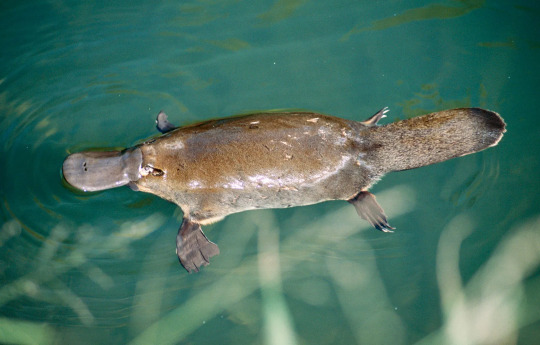
(image: a chimera platypus)
Golduck is also based on the kappa, a creature of Japanese folklore described as a humanoid with a beak that lurks in ponds and streams. The gem on Golduck’s forehead is likely based on the third eye symbolism you get in a lot of new-age woo and the pseudoscience of parapsychology, which was adapted from the chakras of Hinduism. This is in reference to the line having psychic powers despite not being psychic-type.
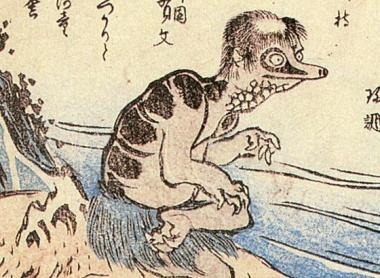
(image: one of many depictions of a kappa)
The Poliwag line are based on tadpoles, the larval stage of frogs. As they mature, tadpoles go from basically a head with a tail on it to a tailless frog. Poliwag represents an early stage in the metamorphosis of a tadpole where it starts to grow hind legs and has not yet lost its tail or started to grow its front legs.

(image: a tadpole with its hind legs grown in)
Poliwhirl and Poliwrath are a more advanced state of metamorphosis where the tadpole has grown all its legs and lost its tail, but is still not a mature frog. Only if Poliwhirl evolves to Politoed does it become a mature frog. Poliwrath never fully maturing is an example of neoteny, a species retaining juvenile traits into adulthood. There aren’t any examples of neotenic frogs that I could find, but there are neotenic salamanders, most famously the axolotl, with keeps multiple juvenile traits as an adult. Politoed is just a generic green frog. The spirals on the bellies of the line is a reference to how some species of frog have such thin abdominal skin in their tadpole stage that their intestines can be seen through the skin. (warning, potentially gross picture below).

(image: a tadpole with visible intestines)
The tentacool line are jellyfish. Specifically, Tentacool may be a box jellyfish, the only jellyfish with true eyes.
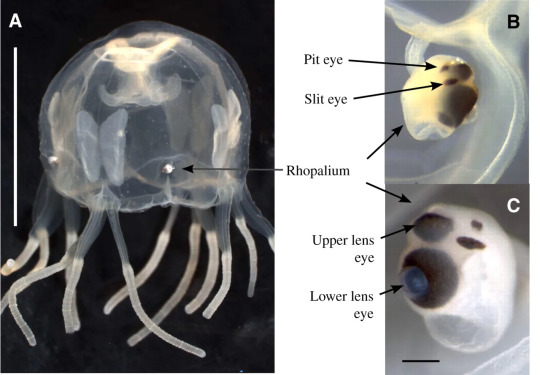
(image: diagram of a box jellyfish with focus in the eyes. source)
Several species of box jellyfish are also extremely dangerous to humans, with their venom causing extreme pain and death. Tentacruel may also be based on the Portugese man-o-war (in fact, Manowar was its prototype English name). Despite looking similar and having a similar hunting style, man-o-wars are not jellyfish, but siphonophores, an extremely cool group of colonial cnidarians you can learn about here. Man-o-wars float on the surface of the water and with for prey to run into their stinging tentacles. Tentacruel is often depicted hunting in a similar style.
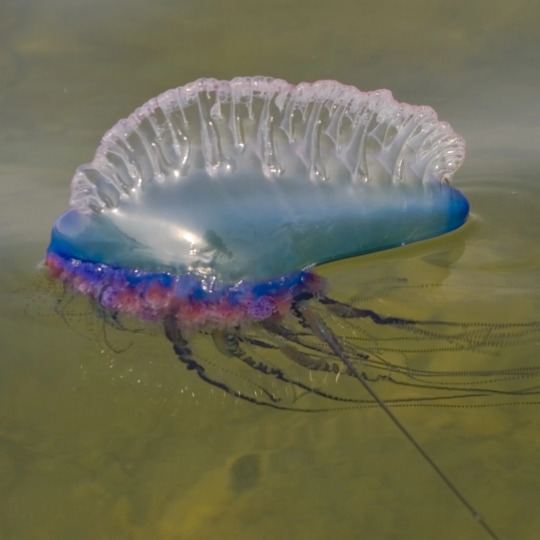
(image: a man-o-war)
Finally, the line’s big red gems and ability to fire laser beams from them likely comes from “bug-eyed monsters” a classic type of sci-fi monster typically found in b-movies.
The Slowpoke line are weird. They are one of those Gen I lines that are weird monsters with little in the way of real-life counterparts like the Nidos, Rhyhorn, and Kangaskhan. I think Slowpoke is a combination of hippos and giant salamanders. It has the little round ears and snout of hippos (which spend much of their time in the water) while its body shape and behavior are closer to giant salamanders. Not just any big salamanders though, they are based on the Cryptobranchids, of which there are three living species: the Chinese giant salamander (actually 5 closely-related species), Japanese giant salamander, and north American hellbender. These giant salamanders spend most if not all their time underwater and are known to be very long-lived and spend most of their time sitting perfectly still, waiting for prey to pass by. Their very still and slow lifestyles inspired Slowpoke’s slowness and stupidity.
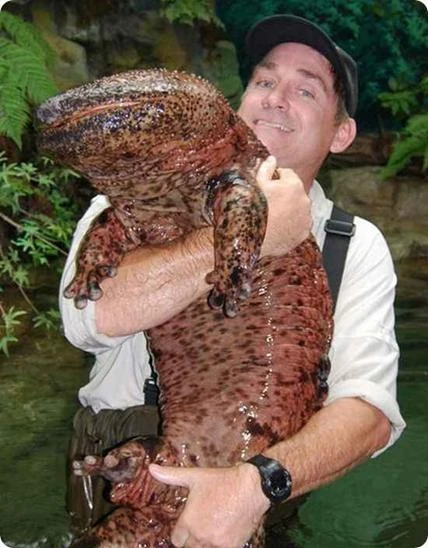
(image: a man holding a giant salamander and fulfilling a wish I didn't know I had until just now)
Things get more complicated when Slowpoke evolves. Both Slowbro and Slowking have a symbiotic relationship with a shellder that bites onto their tail or head, respectively. The shape of the Shellder is based on a turban snail and was planned to be available as an evolution foe Shellder in the Gold/Silver beta called Turban. The fact that the line’s Japanese names (Yadon, Yadoran, and Yadoking) come from the word “yadokari” meaning “hermit crab” and Slowbro being called the hermit crab Pokémon is pretty clear that they supposed to be hermit crabs despite being possibly the least hermit crab-like creatures ever. Come to thing of it, Digimon has Shellmon, another supposed hermit crab that's a weird pink monster sticking out of a turban snail shell. I don't know what to make of that. The hermoit crab connection isn't a very strong connection as hermit crabs live in the discarded shells of snails for defense while only mega Slowbro can actually withdraw into the Shellder. Slowking’s Shellder being on its head and it having that neck ruff is a reference to royalty wearing ruffs, crowns, and turbans. It being the smartest of the Slows may also draw from imagery of the wise, middle-eastern vizier or scholar trope. Finally, both evolutions are based on the sazae-oni, a legendary Japanese sea monster that wears a turban-shaped snail shell. The Pokémon version did not keep the part of the legend where it steals a bunch of sailors' testicles and holds them for ransom.
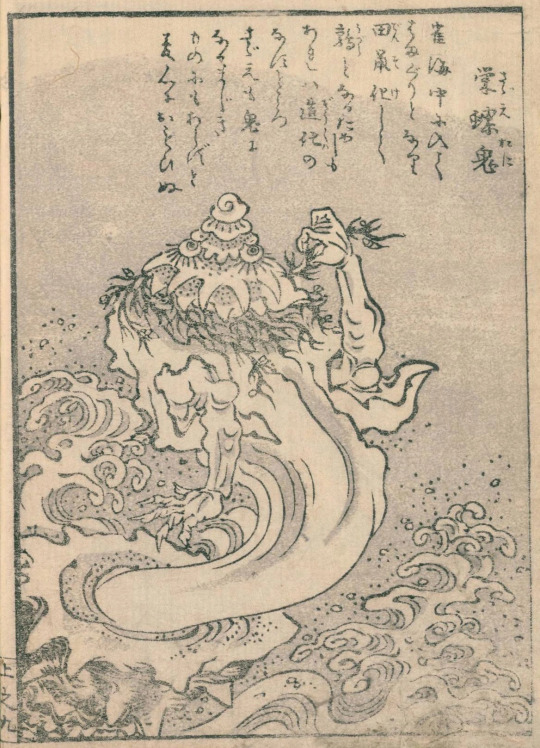
(image: a depiction of the sazae-oni)
The Galarian forms aren’t much different, though they seems to have moved to a more terrestrial lifestyle. Their Shellders being poison-type may reference the highly toxic cone snails. Galarian Slowbros Shellder being on its arm and acting as a projectile weapon references side arms and arm cannons while Galarian Slowking is a more sinister take on the turban-wearing wise man, with its Shellder now looking like a pointy witch hat.
Seel is, rather obviously, a seal, probably a harp seal pup. In addition to its seal origin, it may have some inspiration from other arctic marine mammals: the “horn” of a narwhal, white color of a beluga, and tusks of a walrus. Dewgong is named after the dugong, a relative of the manatee, but that is where their similarities end. Dugongs are rotund sirenians while Dewgong is obviously a seal. It’s a more mature Seel, with all the same inspirations.
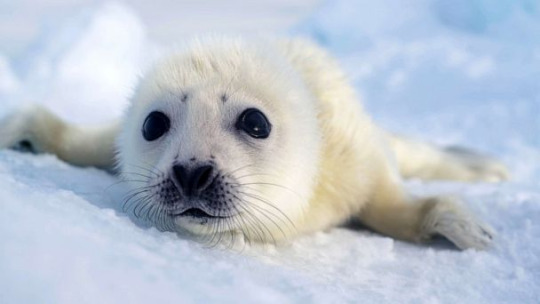
(image: a harp seal pup, easily the cutest thing I've ever put on this blog)
Shellder and Cloyster are both a hodgepodge of various bivalves. Shellder is a combination of clam and scallop. Clams spend most of their time buried under sand and have a powerful foot that can stick out of the shell and is used for moving and digging. Clams also have siphons, organs that are used to intake water, that can be extremely large in some species, most notably the geoduck.

I know what you're thinking and shame on you (Image: a geoduck clam)
Shellder’s constantly exposed tongue is likely a representation of the foot or siphon. They are also based on Scallops, which can swim short distances by rapidly opening and closing their shells to shoot out water.

And now you know why Spongebob made these into birds (gif: a scallop swimming)
Cloyster retains the Scallop swimming methods, but are more based on thorny oysters and true oysters. Thorny oysters are known for having prominent spines on their shells to deter predators.

I CAN FEEL THE WARP OVERTAKING ME! (image: a thorny oyster)
True oysters are the most famous pearl-producing bivalves. Cloyster’s head is based on a pearl, specifically a black pearl. These are produced by only a few species and are very valuable due to their rarity.

(image: black pearls on the shell of one of the species that make them)
That’s it for the first half of gen I. I will return soon (hopefully tomorrow) for the second part and they we will move on to gen II and beyond.
91 notes
·
View notes